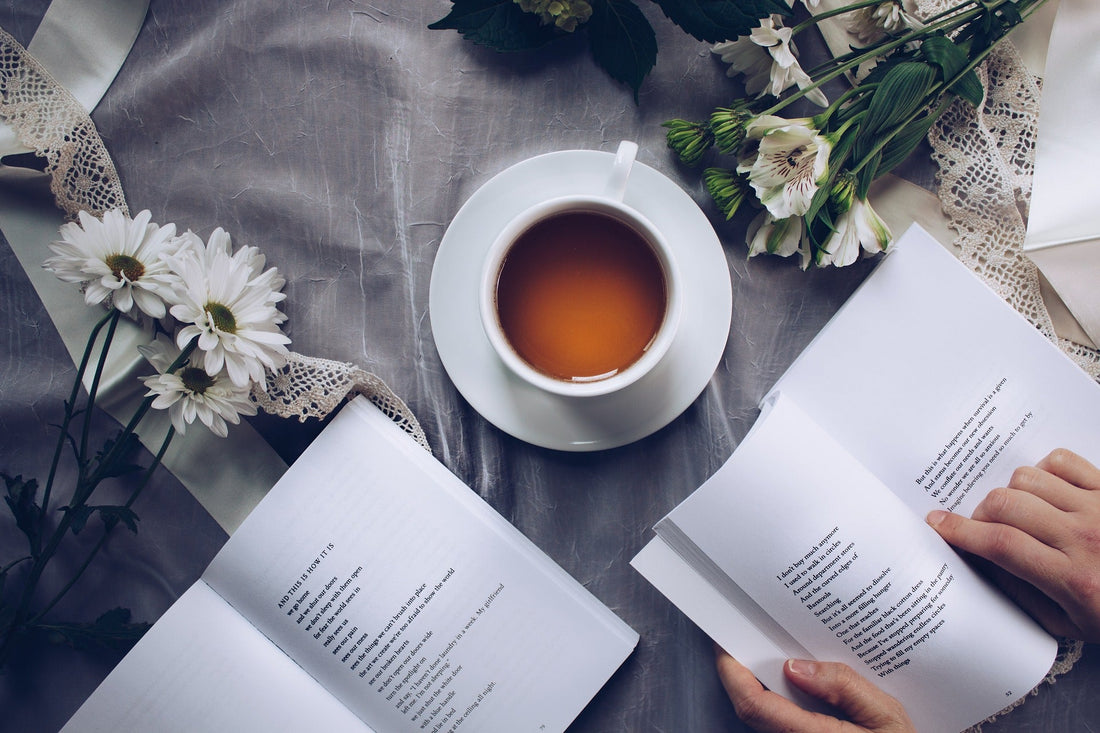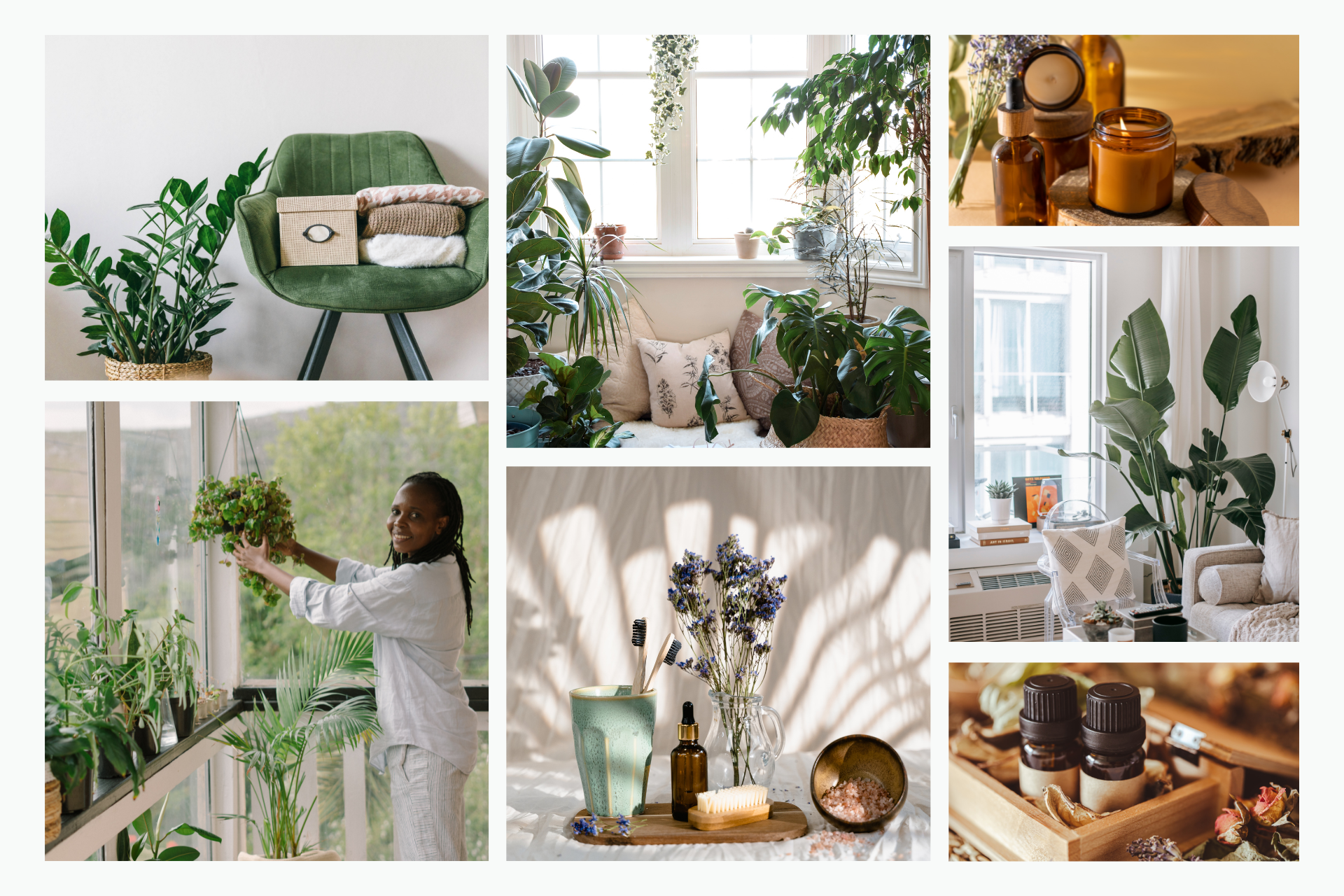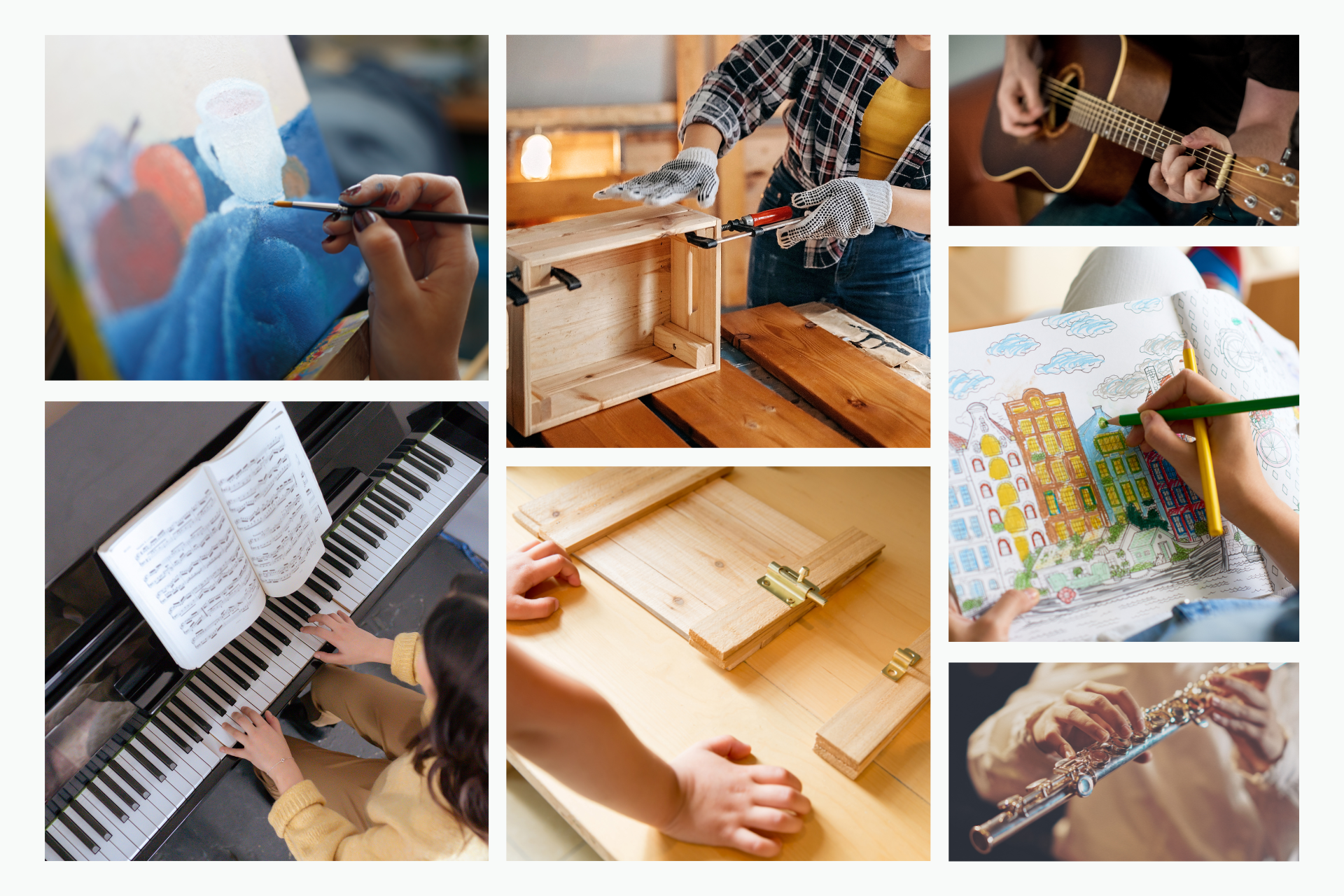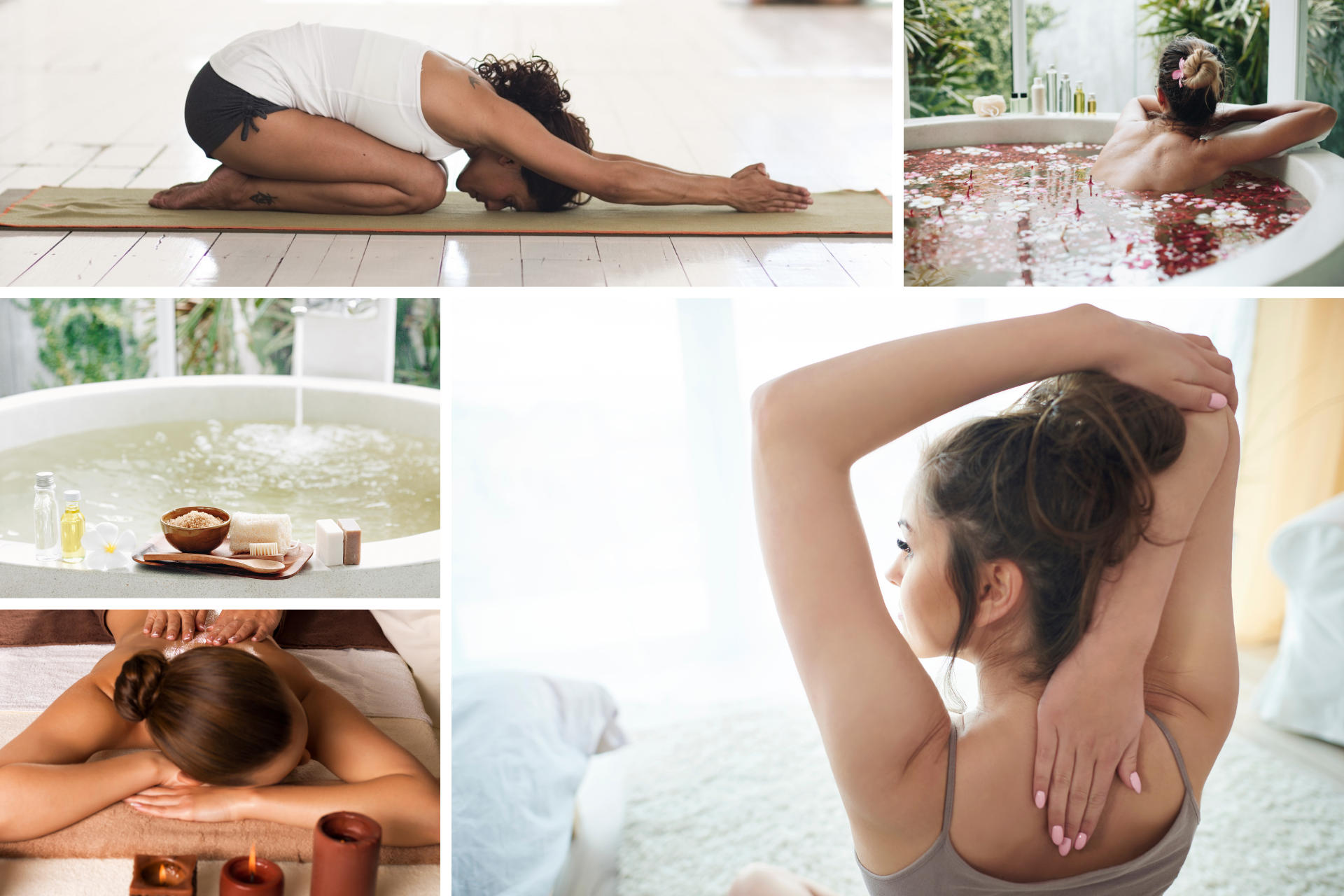
Things to Do for Relaxation at Home
Share
We all know that relaxation is good for us.
The act of relaxing itself feels good: sitting in a warm bath, practicing calm arts and crafts, winding down with a good book... it feels great to slow down for a bit and take some time to be present in yourself (and sometimes by yourself), right?
But relaxation has also been scientifically proven to help you far beyond the present moment. It can boost your general health and wellbeing, with studies showing effective relaxation to be extremely beneficial for the following specific groups of people:
- Those with irritable bowel syndrome
- People who experience premenstrual symptoms (PMS) and pregnancy
- People with HIV
- People with Tourette syndrome
- Those with preoperative anxiety
- Those with mental health conditions, such as depression, stress, and anxiety
If relaxation has been proven to help such diverse patient groups and symptoms, who’s to say there aren’t more people who would benefit from practicing relaxation regularly?
So, you’re all set on wanting to incorporate more relaxation techniques into your regular routine. Where should you start first?
Create a Relaxing Environment

Do you ever notice how much your mood and sense of self can be affected by your surroundings?
Spending a prolonged amount of time in a noisy or crowded area can increase stress levels, cause feelings of overwhelm, and make some people feel claustrophobic.
Equally, spending time outdoors may reduce feelings of stress, giving yourself time to enjoy nature and be out in the fresh air.
You can start to foster a calmer attitude and feelings of relaxation by making small changes to alter your immediate environment…
Decluttering and Organizing Your Space
You know what they say: ‘tidy room, tidy mind’. Having a cluttered or disorganized physical space around you can cause your mind to get easily distracted and your mood to spiral.
Organizing your space and returning things to their home (or finding a new home) is a form of self-care both for your present self and your future self.
Beyond sorting the items you do have around your room/home, you might find it helpful to have a clear-out and either sell items or give them away to friends or charity shops. As well as decluttering your space, helping others will also boost your mood. Happier people tend to experience reduced stress levels and sometimes less stress overall.
Tidying doesn’t just mean sorting physical items and spaces in your life. It can be applied to your electronic devices too. Sorting through emails, deleting old shopping list notes, and organizing your photos are all examples of tasks you can do (at home or on-the-go) to tidy up your mental space and bring clarity to your everyday life.
Adding Soft Lighting and Aromatherapy
We rely on our senses to understand the world around us, but sometimes strong senses can exacerbate internal feelings.
Softening the light around us (most easily done artificially) can make a space feel cozy and more intimate. Moreover, excessive exposure to artificial light at night time can inhibit your body’s production of melatonin and affect sleep, so switching to the ‘little lights’ over the ‘big light’ can support your body’s natural circadian rhythm, in turn helping you to relax.
Equally, it’s common to associate smells with specific emotions or memories. In aromatherapy, specific scents - such as lavender, chamomile, tea tree, and lemon - are used to soothe the body and foster relaxation. There are several ways of accessing aromatherapy at home, from using scented candles to diffusers and bath and body products.
Setting Up a Cozy Reading Nook
The benefits of reading are not a new discovery; in fact, it’s well-documented that reading is good for you. As well as promoting relaxation, reading can lower respiratory rate, blood pressure, and stress levels.
Snuggling up with a book under a blanket or in a comfy chair? Even better. Getting cozy (or the state of ‘hygge’, as the Danish call it) helps us to enter into a state of restfulness, further supporting the body’s natural relaxation.
Bringing Natural Elements Into Your Home Decor
Spending time outside in nature (sometimes labeled ‘ecotherapy’) can help clear your mind and boost your mood. But there are also little additions and changes you can make to bring a little bit of nature into your home.
The most obvious examples include opening windows and blinds to let in natural light and fresh air, keeping house plants, and having some kind of water feature or even a fish tank.
There is also plenty of interior design advice out there on incorporating natural materials and textures into your home, e.g. wooden or rattan furniture, linen and cotton fabrics, stone or slate worktops.
Creating a Nature Inspired Relaxation Corner
We as humans often associate certain experiences, emotions, and memories with specific places. Relaxation is no different.
It can be helpful to create a designated relaxation space (ideal if it’s a corner) to unwind in. You can decorate it with relaxing soft furnishings, a lightly scented reed diffuser and even play sounds from nature from a speaker there. It also helps if there’s a nearby window for you to look outside as you switch off.
Creating a Tech-Free Space in Your Home
Excessive use of artificial light in the evenings can upset your body’s natural sleep cycle, and cause mental and physical unrest. This includes electronic devices!
Whether you create a physical space where electronics aren’t allowed or you create space in your day to wind down without technology for a couple of hours, distancing yourself from devices helps your body’s natural relaxation processes.
Not only will doing this help your body physically, but it also fosters a positive relationship with devices by mentally distancing you from messages, emails and social media in that vital liminal period before sleep.
Mindfulness and Meditation Activities to Calm the Mind

‘Mindfulness’ can seem like a buzzword or social media craze but it’s important to practice being present in the moment to help both with empathy, reflection and (of course) relaxation.
Practicing Deep Breathing Exercises
Deep breathing or diaphragmatic breathing is common practice in meditation and yoga practice.
‘Inhale for four counts. Hold for four counts. Exhale for four counts.’
We’ve all heard it at least once before. It’s easy to dismiss this strategy, but it has been scientifically proven to reduce stress and improve cognitive performance.
The action of counting and holding your breath momentarily also helps you to focus on breathing alone (like the old school “breath into a paper bag” technique) and lower your heart rate, supporting efforts to relax.
Trying Guided Meditation Apps
Struggle leading your own meditations? There are plenty of guided meditation resources out there, leading you through step-by-step to learn basic techniques and build your confidence. Some apps are free and some have a subscription format to access extra features.
Examples of top-rated apps on the market include Headspace, Calm and Ten Percent Happier but there are lots of others out there to explore.
Not an app person? It’s also worth checking out guided meditations on YouTube - try out different approaches for yourself, for free.
Creating a Daily Mindfulness Routine
The thought of creating a mindfulness routine might seem daunting, but it doesn’t have to take a lot of time or effort. The main focus should simply be to incorporate a little mindfulness into your everyday life.
Like all good habits, it’s best to start small while you figure out what works for you. Then you can build and mold things to best suit your lifestyle.
Your mindfulness routine might include different aspects like checking in with yourself, doing basic stretching, practicing gratitude, nourishing your body with food, and feeding your mind with helpful information.
Creative Hobbies That Encourage a Feeling of Calm
Having creative hobbies has been linked to positive mental and physical wellbeing. While deep breathing creates focus through a natural bodily function, creative hobbies create focus through the tactile act of making something with your hands.
Don’t worry - you don’t have to be any good at these hobbies or strive for perfection. There should be equal satisfaction and relaxation in creating something for your own enjoyment only and hanging it up in the hallway. The process is more important than the end result!

Some ideas of different creative hobbies to explore are…
Painting or Drawing
Painting and drawing can be a great starting point in creative hobbies. Here are just a few reasons we like them…
- They use common items: a pen/pencil and paper. These don’t have to be fancy or expensive.
- They can be as simplistic or as detailed and as abstract or realistic as you like.
- They’re fairly quick to do and (depending on the paint), there should be a minimal waiting time at the end for things to dry before you can say “ta-dah!”.
DIY Projects
DIY projects are a great way to get stuck in and become the hero of your own story! Even better: DIY is an adaptable spectrum. You can take on as little of a DIY task as you like, giving you that ‘yes!’ satisfaction without always having to commit to completing a full project.
A few examples…
- Assembling an IKEA chair - all the kit and instructions, minimal room for error.
- Putting up shelves - similar to the above but with the added fun of spirit levels.
- Upcycling a chest of drawers - a lick of paint, new handles, the works.
- Building your own coffee table - clean and minimalist or abstract and elaborate? The world is your oyster!
Playing a Musical Instrument
Learning to play an instrument can have a whole host of benefits, from the more obvious improvement of dexterity and lowering of cortisol (i.e. the stress hormone) to reducing symptoms of depression and PTSD.
Similarly, listening to music can be an effective form of relaxation in itself, and the act of practicing an instrument combines both of these.
Much like arts and crafts and DIY activities, you don’t have to be the next Mozart - the mere act of getting involved starts to trigger your body’s natural relaxation.
Physical and Relaxing Activities

Physical health is intrinsically linked to mental health and relaxation encompasses both of these. Your body has to physically slow down before the mind and your subconscious can rest too.
Yoga and Stretching Exercises
Yoga, as mentioned above, has a close relationship with meditation and mindfulness, so it had to feature somewhere on this list!
Yoga stretches both your mind and body, pushing you to gradually build your mental and physical flexibility and endurance over time. Practicing yoga encourages a shift “from the sympathetic nervous system and the flight-or-fight response to the parasympathetic system and the relaxation response”.
Of course, within yoga, there are several different approaches, some of which are more physically demanding than others. But, for optimum relaxation, restorative yoga is probably your best focus.
Taking a Warm Bath or Shower
Just as being among nature can enhance relaxation, being in water can also help you to unwind.
For best results, you should aim for the water to be between 36-38° C (96-100° F) to boost circulation and physically help your muscles to relax.
The best time for a relaxing bath and shower is usually just before sleep because of its relaxing properties, but also because your body temperature drops slightly afterwards, further encouraging sleep.
Enjoying a Relaxing Massage at Home
Massages are commonly known to encourage relaxation. This is because the action of massaging increases the temperature of soft tissues and encourages the release of hormones. A Swedish massage, in particular, is best known for its relaxing properties. It’s also a great first kind of massage to experience if you’re new to it all.
Moreover, having a massage in a familiar space like your own home will automatically make you feel more at ease. Even better if you and your partner give each other massages as a way of spending quality time and relaxing together.
For more articles on wellness, read:
